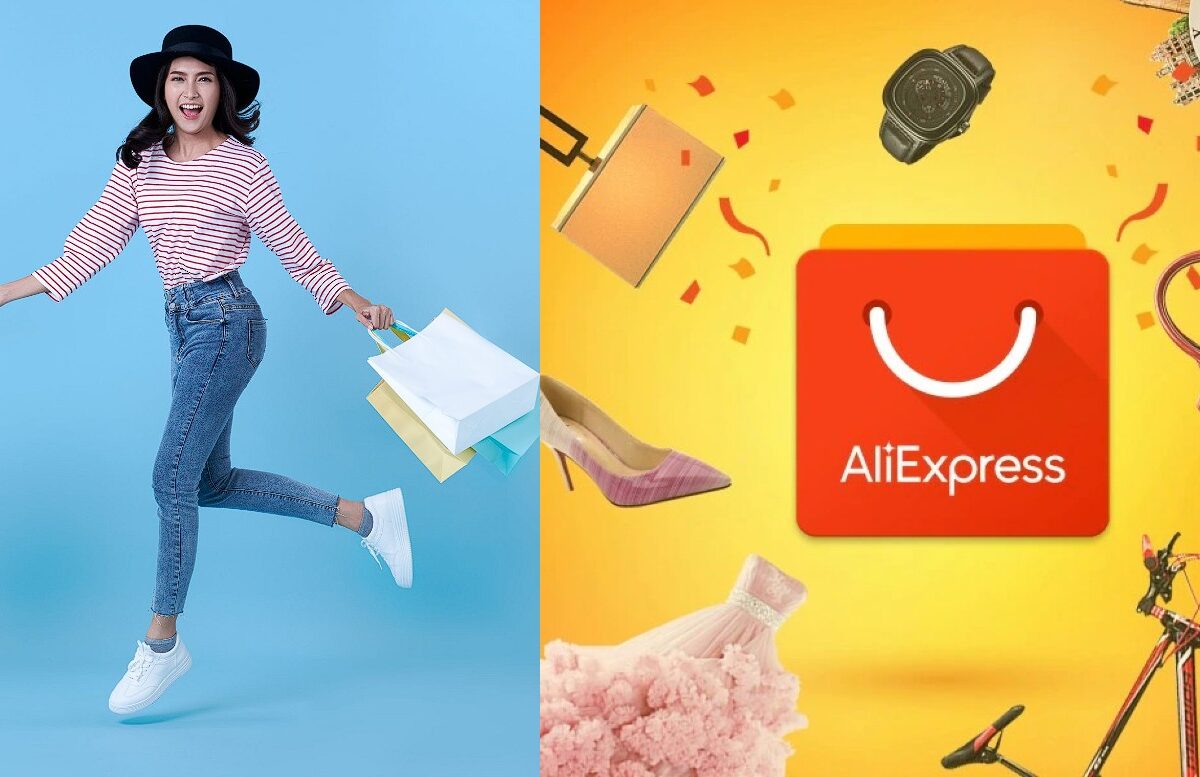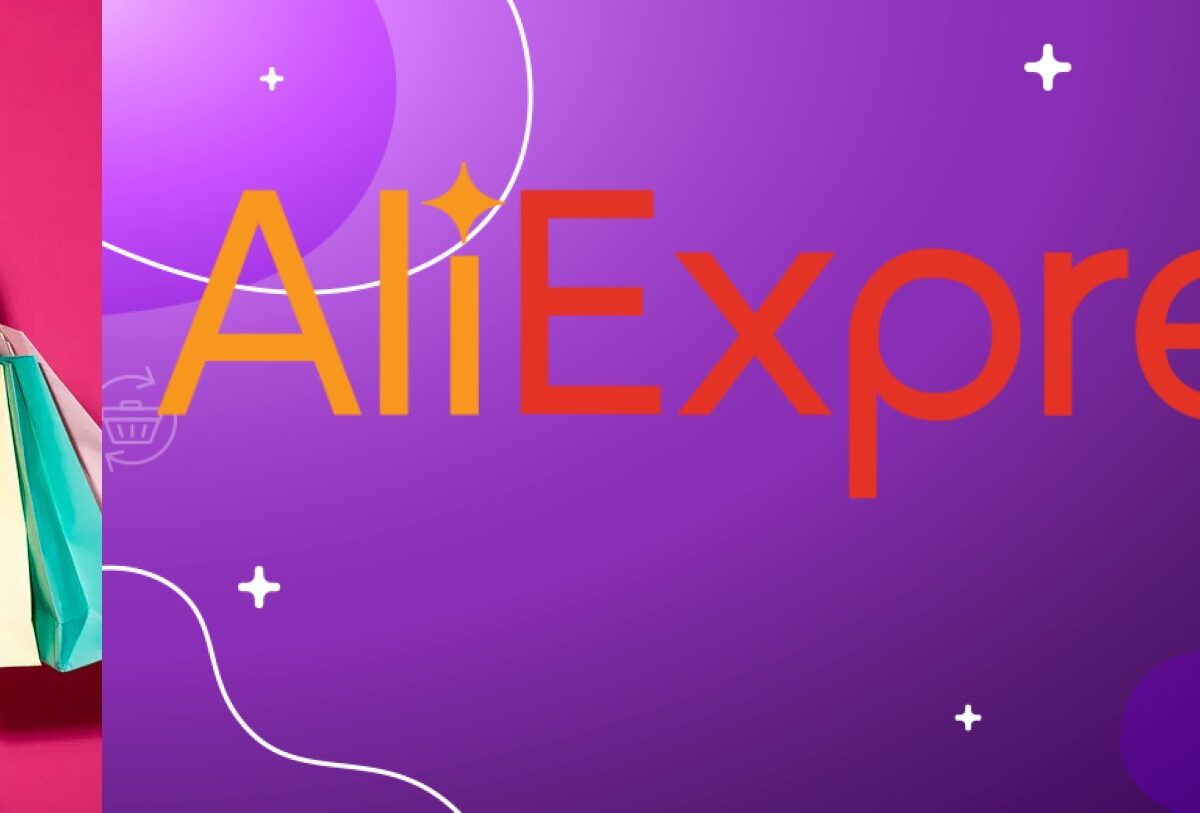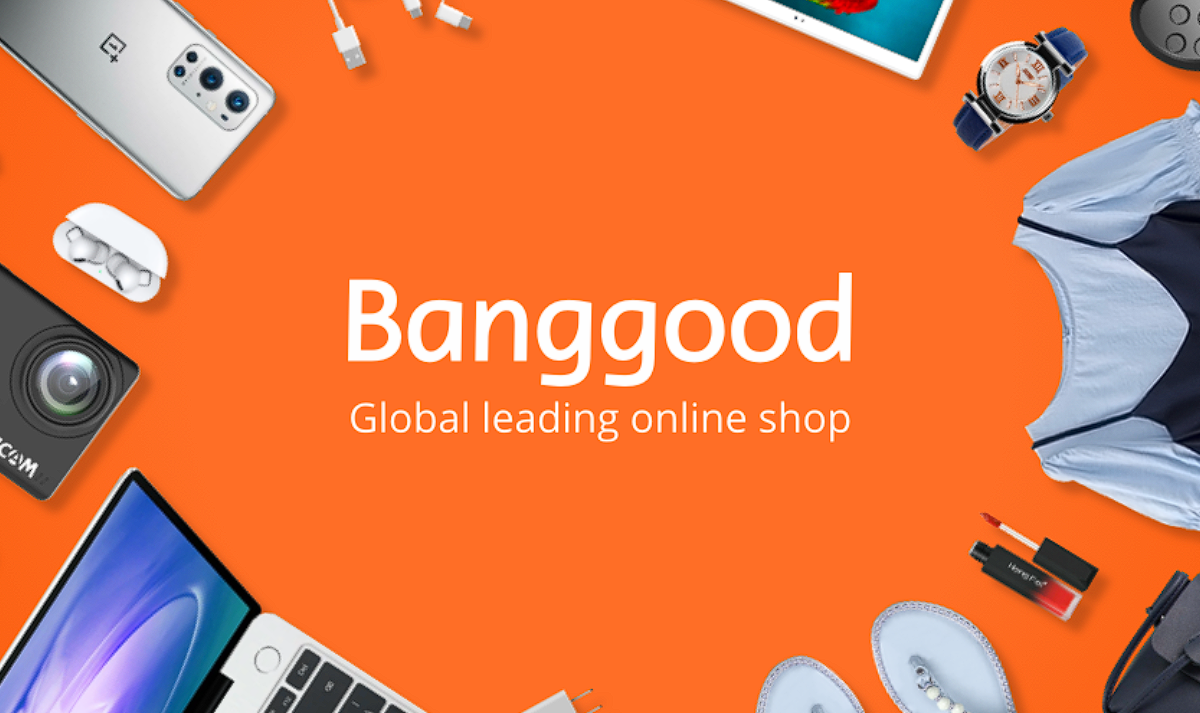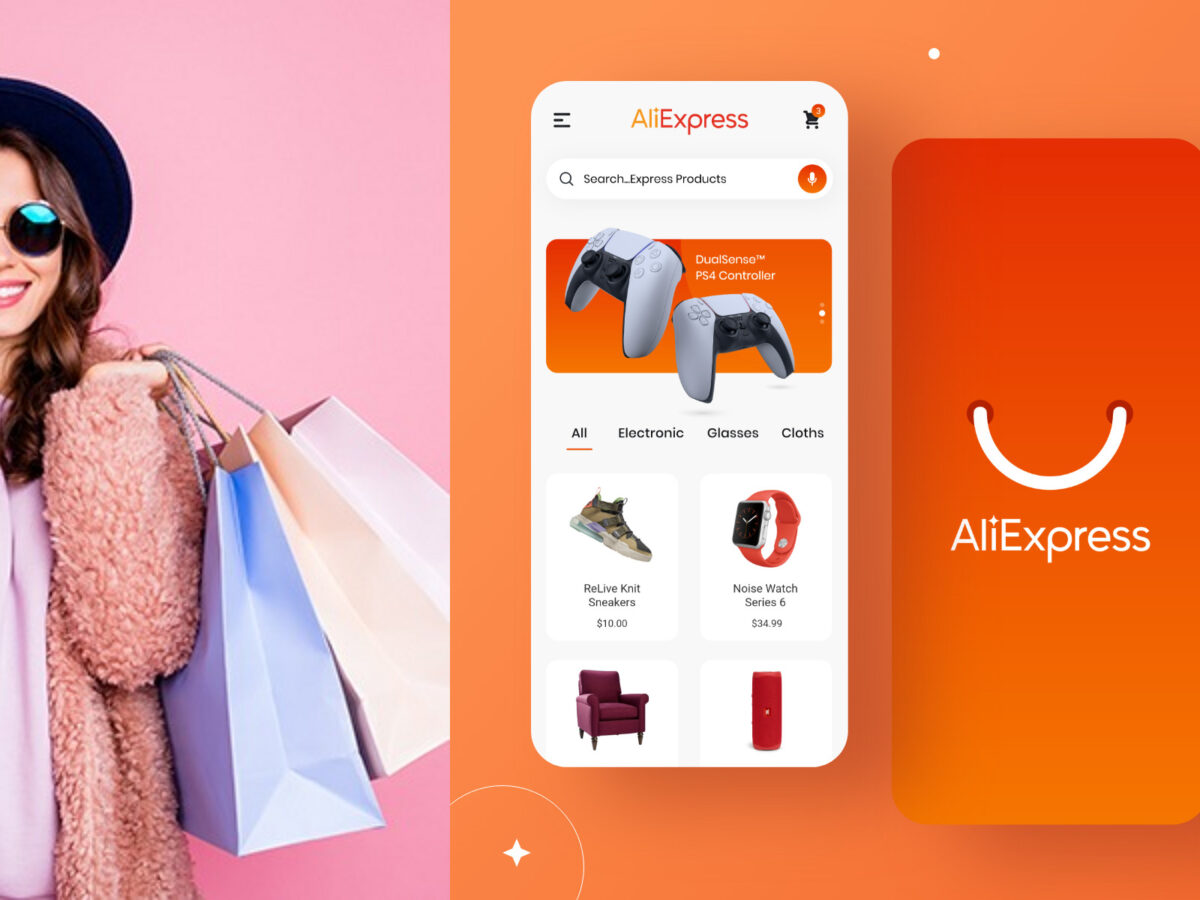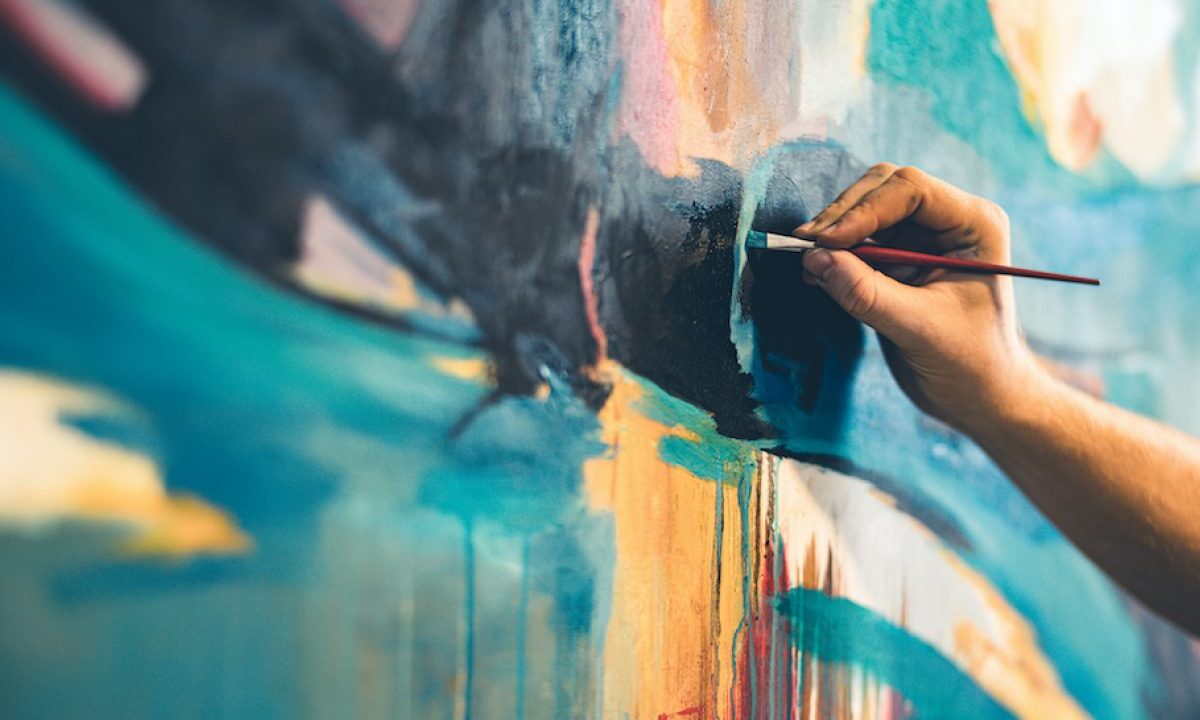Uncover the ‘AliExpress Blueprint’—your roadmap to understanding how it works, country-specific tips, and insider deals. This comprehensive guide demystifies the platform, offering strategic insights for tailored shopping experiences. Navigate the AliExpress landscape with confidence, armed with exclusive tips and insider knowledge to unlock maximum savings on every purchase.
Category: Art
Your Ultimate Buying Guide for Art: Top Brands and Budget Options
Art is a timeless investment that can add aesthetic value to your living space or serve as a lucrative asset in your investment portfolio. However, buying art can be a daunting task, especially if you are unfamiliar with the art market. This comprehensive guide will help you navigate the art market and provide you with information on top brands and budget options.
Factors to Consider When Buying Art
- Purpose: The first step in buying art is to determine its purpose. Are you buying art to decorate your home or office? Or are you buying art as an investment? This will help you determine your budget and the type of art to buy.
- Style: Art comes in various styles, from abstract to figurative. Determine your preferred style and ensure that it aligns with your purpose.
- Artist: Research the artist behind the artwork. Look at their portfolio, their background, and their reputation in the art community.
- Condition: Check the condition of the artwork. Ensure that there are no damages or restorations that may affect the value of the artwork.
- Authentication: Verify the authenticity of the artwork. Look for the artist’s signature, the artwork’s provenance, and any documentation that may validate the artwork’s authenticity.
Top Brands in Art
- Christie’s: Christie’s is a renowned auction house that offers a wide range of artworks from various artists and styles. They have a team of experts who authenticate and value artworks.
- Sotheby’s: Sotheby’s is another prestigious auction house that specializes in fine art, jewelry, and antiques. They have a vast collection of artworks from various artists and styles.
- Phillips: Phillips is a global auction house that offers contemporary art, design, and photographs. They have a reputation for discovering emerging artists.
Budget Options
- Online marketplaces: Online marketplaces such as Etsy, Artfinder, and Saatchi Art offer affordable art options from emerging artists worldwide.
- Art fairs: Art fairs are an excellent opportunity to discover new and emerging artists. They offer a wide range of art at various price points.
- Local galleries: Local galleries offer affordable art options from local artists. You can find unique and affordable artworks that can add character to your living space.
Buying art can be a rewarding experience. However, it’s crucial to research and evaluate your options carefully. This guide has provided you with information on factors to consider when buying art, top brands in the art market, and budget options. With this knowledge, you can confidently make an informed decision when buying art.
Art Product Comparison: Features, Pricing, and Reviews of Popular Brands
Art is a diverse and subjective field that has various options and price points. With so many brands and products to choose from, it can be overwhelming to determine which one to choose. This product comparison will provide you with information on popular art brands, their features, pricing, and reviews to help you make an informed decision.
| Brand | Features | Pricing | Reviews |
|---|---|---|---|
| Winsor & Newton | Wide range of art supplies including paints, brushes, and paper | $10 – $200+ | 4.5/5 on Amazon |
| Faber-Castell | High-quality colored pencils, markers, and art sets | $10 – $200+ | 4.7/5 on Amazon |
| Prismacolor | Popular colored pencils and art sets | $10 – $200+ | 4.6/5 on Amazon |
| Copic | High-quality markers with replaceable nibs | $7 – $500+ | 4.7/5 on Amazon |
| Liquitex | Professional-grade acrylic paints and mediums | $10 – $200+ | 4.5/5 on Amazon |
| Sakura | Popular gel pens and art markers | $5 – $50+ | 4.6/5 on Amazon |
- Winsor & Newton: Winsor & Newton is a well-known brand that offers a wide range of art supplies, including paints, brushes, and paper. Their products are of high quality, and their prices range from $10 to $200+. They have a rating of 4.5/5 on Amazon.
- Faber-Castell: Faber-Castell is a popular brand that offers high-quality colored pencils, markers, and art sets. Their products are suitable for both beginners and professionals, and their prices range from $10 to $200+. They have a rating of 4.7/5 on Amazon.
- Prismacolor: Prismacolor is another popular brand that offers high-quality colored pencils and art sets. Their products are known for their vibrant colors and smooth blending capabilities. Their prices range from $10 to $200+, and they have a rating of 4.6/5 on Amazon.
- Copic: Copic is a high-end brand that offers professional-grade markers with replaceable nibs. Their markers are known for their longevity and high-quality ink. Their prices range from $7 to $500+, and they have a rating of 4.7/5 on Amazon.
- Liquitex: Liquitex is a brand that offers professional-grade acrylic paints and mediums. Their products are known for their vibrant colors and durability. Their prices range from $10 to $200+, and they have a rating of 4.5/5 on Amazon.
- Sakura: Sakura is a popular brand that offers gel pens and art markers. Their products are known for their smooth writing and vibrant colors. Their prices range from $5 to $50+, and they have a rating of 4.6/5 on Amazon.
This product comparison has provided you with information on popular art brands, their features, pricing, and reviews. It’s important to consider your budget and your specific needs when choosing a brand. With this knowledge, you can confidently select the brand and product that suits your needs and preferences.
Art for Every Budget: Affordable Options and High-End Brands
Art is not only a means of self-expression but also a way to add beauty and character to your living space. Whether you’re on a tight budget or have the means to invest in high-end art, there are options available for every budget. This list will provide you with affordable options and high-end brands for art.
| Budget | Art Options |
|---|---|
| Under $50 | Posters, prints, art prints, wall decals |
| $50 – $100 | Small paintings, digital prints, handmade crafts, and sculptures |
| $100 – $500 | Original paintings, limited edition prints, art photography, and handmade ceramics |
| $500 – $1,000 | High-quality original paintings, limited edition prints by established artists, and bronze sculptures |
| $1,000 – $5,000 | High-end paintings by established artists, limited edition prints by well-known artists, and hand-blown glass sculptures |
| Over $5,000 | Investment-grade art, works by famous artists, rare and unique pieces, and antique art |
This list has provided you with affordable options and high-end brands for art. It’s essential to consider your budget and your personal preferences when selecting art. Whether you’re on a tight budget or have the means to invest in high-end art, there are options available for every budget. With this knowledge, you can confidently select the art that suits your needs and preferences.
Competitive Landscape Analysis of Art: SWOT Analysis of Major Players
The art industry is a diverse and competitive market, with various players ranging from art galleries, auction houses, online marketplaces, and individual artists. In this analysis, we will examine the competitive landscape of the art market and conduct a SWOT analysis of major players.
| Player | Strengths | Weaknesses | Opportunities | Threats |
|---|---|---|---|---|
| Art Galleries | Personal and immersive experience, curated selection of art | Limited reach to potential buyers, high overhead costs | Developing online presence, collaborations with emerging artists | Competition from online marketplaces |
| Auction Houses | Established reputation, expert authentication and valuation of art | Limited accessibility to smaller buyers, high commission fees | Expansion to online auctions, collaborations with emerging artists | Competition from online marketplaces |
| Online Marketplaces | Wide reach to potential buyers, low overhead costs | Quality control concerns, lack of personal interaction with buyers | Partnership with established art brands, expansion to brick-and-mortar stores | Competition from established auction houses and art galleries |
| Individual Artists | Unique and personal artwork, potential for higher profits | Limited exposure and marketing capabilities, lack of expert authentication and valuation | Utilizing social media and online marketplaces, collaborations with art galleries and auction houses | Competition from established and emerging artists |
The art market is a competitive landscape with various players. Understanding the strengths, weaknesses, opportunities, and threats of major players such as art galleries, auction houses, online marketplaces, and individual artists is crucial to navigating the art market successfully. This analysis provides valuable insights into the art market and can help buyers and sellers make informed decisions.
The Latest Trends and Innovations in the Art Market
The art market is constantly evolving, and there are several trends and innovations that have emerged in recent years. In this response, we will provide an overview of some of the latest trends and innovations in the art market.
- Digital Art: Digital art has become increasingly popular in recent years, and the market for digital art has grown rapidly. Digital art refers to artworks that are created using digital technology and can be viewed or displayed on electronic devices such as smartphones, tablets, or computers. Digital art has become more accessible to collectors and art enthusiasts due to the ease of reproduction and distribution.
- Art and Blockchain: Blockchain technology has been increasingly used in the art market in recent years to help verify the authenticity of artworks and protect against fraud. Blockchain can be used to create digital certificates of authenticity that are stored on a decentralized ledger, ensuring that the artwork’s authenticity can be verified throughout its lifetime.
- NFTs: Non-fungible tokens (NFTs) are a form of digital asset that uses blockchain technology to verify ownership and authenticity. In the art market, NFTs have been used to sell digital artworks, such as GIFs and digital images. NFTs have created new opportunities for artists to monetize their work and have provided collectors with a new way to invest in art.
- Virtual Art Exhibitions: Virtual art exhibitions have become increasingly popular in recent years, especially with the COVID-19 pandemic’s restrictions on in-person events. Virtual art exhibitions provide a new way for artists to showcase their work and for collectors to view and purchase artwork from the comfort of their own homes.
- Sustainability and Environmentalism: The art market has become increasingly focused on sustainability and environmentalism in recent years. Artists and galleries are using sustainable materials and focusing on environmentally conscious practices to reduce their carbon footprint. Buyers are also becoming more environmentally conscious and seeking out art that aligns with their values.
The art market is constantly evolving, and these are just some of the latest trends and innovations that have emerged in recent years. Digital art, blockchain technology, NFTs, virtual art exhibitions, and sustainability and environmentalism are all areas that are shaping the future of the art market. As technology continues to advance and societal values continue to evolve, we can expect to see even more changes in the art market in the years to come.
Art for All Ages and Preferences: From Kids to Seniors
Art is an excellent way for people of all ages to express themselves and appreciate beauty. Different age groups and preferences require different types of art to ensure that everyone enjoys it. In this list, we will provide art options for different age groups and preferences.
?Art for Kids
| Art Type | Description |
|---|---|
| Finger Painting | A fun and interactive way for kids to explore their creativity |
| Stickers | A simple and easy way for kids to add color and personality to their artwork |
| Coloring Books | A structured way for kids to learn and practice coloring within the lines |
| Clay | A tactile and sensory experience that allows kids to create 3D art |
Art for Teens
| Art Type | Description |
|---|---|
| Sketching | A versatile and easy-to-learn form of art that allows teens to experiment with different styles and techniques |
| Graffiti Art | A form of street art that allows teens to express themselves and their opinions |
| Photography | A medium that allows teens to capture and share their unique perspectives on the world |
| Digital Art | A form of art that appeals to tech-savvy teens who enjoy creating art on electronic devices |
Art for Adults
| Art Type | Description |
|---|---|
| Painting | A versatile medium that allows adults to express themselves and experiment with different styles and techniques |
| Sculpture | A 3D form of art that allows adults to create art that can be viewed and appreciated from different angles |
| Mixed Media | A combination of different art forms, such as painting, collage, and found objects, that allows adults to create unique and eclectic artwork |
| Art Prints | High-quality prints of original artwork that allow adults to decorate their living spaces with beautiful and unique artwork |
Art for Seniors
| Art Type | Description |
|---|---|
| Watercolor | A medium that is easy on the hands and can be done sitting down, making it ideal for seniors |
| Calligraphy | A form of art that is meditative and can improve hand-eye coordination |
| Needlepoint | A form of art that is both creative and practical, allowing seniors to create beautiful and useful objects |
| Collage | A medium that is easy to learn and allows seniors to use their imagination and creativity to create unique artwork |
Art is a wonderful way for people of all ages and preferences to express themselves and appreciate beauty. Different age groups and preferences require different types of art to ensure that everyone enjoys it. With this list of art options for different age groups and preferences, everyone can find a form of art that they enjoy and connect with.
Expert Reviews and Ratings: Helping Customers Choose the Best Art
Choosing the right piece of art can be a daunting task, especially for those who are not familiar with the art world. In this list, we will provide expert reviews and ratings to help customers choose the best art for their needs.
| Art Piece | Expert Review | Rating |
|---|---|---|
| “Starry Night” by Vincent van Gogh | A masterpiece that captures the essence of the night sky and showcases Van Gogh’s unique style | 9.5/10 |
| “The Persistence of Memory” by Salvador Dali | A surreal and dreamlike piece that challenges the viewer’s perception of time | 9/10 |
| “Guernica” by Pablo Picasso | A powerful political statement that depicts the horrors of war and violence | 9.5/10 |
| “Campbell’s Soup Cans” by Andy Warhol | A pop art classic that celebrates consumer culture and challenges traditional art conventions | 8.5/10 |
| “Composition VIII” by Wassily Kandinsky | A striking abstract piece that showcases Kandinsky’s innovative use of color and shape | 9/10 |
Choosing the right piece of art can be challenging, but with expert reviews and ratings, customers can make informed decisions about their art purchases. These pieces, such as “Starry Night” by Vincent van Gogh, “The Persistence of Memory” by Salvador Dali, “Guernica” by Pablo Picasso, “Campbell’s Soup Cans” by Andy Warhol, and “Composition VIII” by Wassily Kandinsky, are all excellent choices for anyone looking to add a timeless masterpiece to their collection.
Sustainability and Corporate Social Responsibility in Art: Making Art Environmentally Friendly and Socially Responsible
As the world becomes more environmentally conscious and socially responsible, companies must adapt their practices to meet these changing expectations. The art industry is no exception, and companies can take steps to make their art environmentally friendly and socially responsible.
Sustainability
Sustainability refers to the practice of meeting the needs of the present without compromising the ability of future generations to meet their own needs. In the art industry, sustainability can be achieved through the use of environmentally friendly materials, reducing waste and emissions, and supporting sustainable practices throughout the supply chain.
- One way that companies can make their art more sustainable is by using eco-friendly materials. For example, they can use recycled paper, organic cotton, or biodegradable paints. Companies can also reduce their carbon footprint by sourcing materials locally and using renewable energy sources.
- Another way that companies can support sustainability is by reducing waste and emissions. For example, they can recycle or repurpose materials, reduce packaging, and minimize the use of harmful chemicals.
Corporate Social Responsibility
Corporate social responsibility (CSR) refers to the practice of operating a business in a way that benefits society and the environment. In the art industry, CSR can be achieved through supporting social causes, promoting diversity and inclusion, and providing fair wages and working conditions for artists and employees.
- One way that companies can support social causes is by partnering with nonprofit organizations that align with their values. For example, companies can donate a portion of their profits to organizations that promote environmental sustainability or support art education programs.
- Another way that companies can promote CSR is by promoting diversity and inclusion. For example, they can showcase the work of artists from diverse backgrounds and support underrepresented communities.
- Finally, companies can ensure that they provide fair wages and working conditions for artists and employees. This can be achieved by offering benefits such as healthcare and retirement plans, promoting work-life balance, and providing a safe and inclusive workplace.
As the world becomes more environmentally conscious and socially responsible, companies must adapt their practices to meet these changing expectations. In the art industry, sustainability and corporate social responsibility can be achieved through using eco-friendly materials, reducing waste and emissions, supporting social causes, promoting diversity and inclusion, and providing fair wages and working conditions. Companies that prioritize sustainability and CSR are more likely to appeal to consumers who value social responsibility and environmentally friendly practices.
Choosing the Right Art: Factors to Consider Before Making a Purchase
Buying art can be a fulfilling and rewarding experience, but it can also be daunting for those who are not familiar with the art world. Before making a purchase, consumers should consider several factors to ensure that they choose the right product for their needs.
- Personal Preference: The most important factor to consider when buying art is personal preference. Art should be something that speaks to you and that you enjoy looking at every day. Take the time to explore different styles and mediums, and don’t be afraid to trust your instincts when it comes to what you like.
- Budget: Art can range from very affordable to extremely expensive, so it’s important to have a budget in mind before making a purchase. Consider the price of the artwork, as well as any additional costs such as framing, shipping, or installation.
- Authenticity: When buying art, it’s important to ensure that the piece is authentic and not a reproduction. Look for works that come with a certificate of authenticity, and do your research to ensure that the artist and the artwork are legitimate.
- Condition: Consider the condition of the artwork before making a purchase. Look for any signs of damage or wear, and make sure that the artwork is in good condition. If buying online, make sure that the seller provides detailed photographs of the artwork.
- Investment Value: Art can be a valuable investment, so consider the investment potential of the artwork before making a purchase. Look for works by established artists, and do your research on the artist’s previous sales and auction results.
- Size and Placement: Consider the size and placement of the artwork before making a purchase. Make sure that the artwork fits the space where it will be displayed, and consider the lighting and other factors that may impact the artwork’s visibility.
Buying art can be a fulfilling and rewarding experience, but it’s important to consider several factors before making a purchase. Personal preference, budget, authenticity, condition, investment value, size, and placement are all important factors to consider when choosing the right artwork. By taking the time to consider these factors, consumers can ensure that they choose a piece of art that they will enjoy for years to come.
Art Market Dynamics: Emerging Trends, Key Players, and Growth Prospects
The art market is a complex and dynamic industry that is influenced by a variety of factors, including cultural trends, economic conditions, and technological advancements. In this response, we will provide an overview of the current market dynamics of art, including emerging trends, key players, and growth prospects.
Emerging Trends
- Digital Art: Digital art has become increasingly popular in recent years, and the market for digital art has grown rapidly. Advances in technology and changes in consumer behavior have made digital art more accessible to collectors and art enthusiasts.
- Art and Blockchain: Blockchain technology has been increasingly used in the art market in recent years to help verify the authenticity of artworks and protect against fraud. Blockchain can be used to create digital certificates of authenticity that are stored on a decentralized ledger, ensuring that the artwork’s authenticity can be verified throughout its lifetime.
- NFTs: Non-fungible tokens (NFTs) are a form of digital asset that uses blockchain technology to verify ownership and authenticity. In the art market, NFTs have been used to sell digital artworks, such as GIFs and digital images. NFTs have created new opportunities for artists to monetize their work and have provided collectors with a new way to invest in art.
Key Players
The key players in the art market include artists, galleries, auction houses, art fairs, and online platforms.
- Artists: Artists are the creators of the artwork and are an essential component of the art market.
- Galleries: Galleries represent and sell the artwork of artists. They play an important role in the art market by showcasing and promoting new and established artists.
- Auction Houses: Auction houses such as Sotheby’s and Christie’s are major players in the art market, facilitating the sale of high-value artworks through auctions.
- Art Fairs: Art fairs such as Art Basel and Frieze are important events in the art market, providing a platform for galleries and artists to showcase their work to a global audience.
- Online Platforms: Online platforms such as Artsy and Saatchi Art have become increasingly important in the art market, allowing collectors to browse and purchase artworks from the comfort of their own homes.
Growth Prospects
The art market has shown steady growth in recent years, with the global art market estimated to be worth over $50 billion. The market is expected to continue growing, driven by factors such as increased interest from collectors in emerging markets, the growing popularity of digital art and NFTs, and the increasing use of technology in the art market.
However, the art market is also subject to economic and political uncertainties, such as fluctuations in the stock market and changes in government regulations. As such, the growth prospects of the art market are dependent on a variety of factors, making it a dynamic and challenging industry to navigate.
The art market is a complex and dynamic industry that is influenced by a variety of factors. Emerging trends such as digital art, art and blockchain, and NFTs are changing the way art is created, sold, and collected. Key players in the art market include artists, galleries, auction houses, art fairs, and online platforms. The growth prospects of the art market are dependent on a variety of factors, making it a challenging but exciting industry to navigate.
Consumer Behavior and Buying Patterns for Art: Insights from Research
Consumer behavior and buying patterns for art are influenced by a variety of factors, including personal preferences, cultural trends, and economic conditions. In this response, we will provide insights from research on the consumer behavior and buying patterns for art.
- Personal Preferences: Personal preferences play a significant role in the consumer behavior and buying patterns for art. Consumers are more likely to purchase art that aligns with their personal taste and aesthetic preferences. Research has shown that consumers are willing to pay more for art that they personally like, regardless of the artist’s reputation or the artwork’s investment potential.
- Cultural Trends: Cultural trends also influence consumer behavior and buying patterns for art. For example, the increasing popularity of street art and urban art has led to a growing demand for works in this genre. The rise of digital art and NFTs has also created new opportunities for artists and collectors.
- Economic Conditions: Economic conditions can have a significant impact on consumer behavior and buying patterns for art. During times of economic uncertainty, consumers may be more cautious in their art purchases, leading to a decline in sales. However, research has shown that the art market is relatively resilient during economic downturns, with some collectors seeing art as a safe haven for their investments.
- Social Proof: Social proof is another factor that can influence consumer behavior and buying patterns for art. Social proof refers to the idea that people are more likely to follow the actions of others when making purchasing decisions. For example, if a piece of art has been exhibited in a prestigious gallery or has received positive reviews from critics, consumers may be more likely to consider purchasing it.
- Online Shopping: The rise of online shopping has also impacted consumer behavior and buying patterns for art. Online platforms such as Artsy and Saatchi Art have made it easier for consumers to browse and purchase art from the comfort of their own homes. However, research has shown that some consumers still prefer to view artworks in person before making a purchase.
Consumer behavior and buying patterns for art are influenced by a variety of factors, including personal preferences, cultural trends, economic conditions, social proof, and online shopping. Understanding these factors can help artists, galleries, and online platforms to better cater to the needs and preferences of their customers. While the art market can be unpredictable, research provides valuable insights into the factors that influence consumer behavior and buying patterns for art.
The Impact of Technological Advancements on Art: Exploring the Intersection of Art and Technology
Technological advancements have had a significant impact on the art world, transforming the way art is created, exhibited, and consumed. In this response, we will explore the intersection of art and technology and the impact that technological advancements have had on the art industry.
- Creation of Art: Technology has opened up new possibilities for the creation of art, allowing artists to experiment with new mediums and techniques. For example, digital art has become increasingly popular in recent years, with artists using software and computer programs to create works of art. Technology has also enabled artists to use 3D printing to create sculptures and other three-dimensional artworks.
- Exhibition and Display of Art: Technology has also transformed the way art is exhibited and displayed. Digital displays and projectors have enabled artists and curators to create immersive installations and exhibitions that go beyond traditional painting and sculpture. Augmented reality and virtual reality technologies have also been used to create interactive art experiences that allow viewers to engage with the artwork in new and innovative ways.
- Distribution and Sales of Art: The internet has revolutionized the distribution and sales of art, with online platforms such as Artsy and Saatchi Art providing a global marketplace for artists and collectors. Social media platforms such as Instagram have also become important marketing tools for artists, allowing them to showcase their work to a large audience. Blockchain technology has also been used to create digital certificates of authenticity, making it easier to verify the authenticity of artworks and protect against fraud.
- Preservation and Restoration of Art: Technology has also played a significant role in the preservation and restoration of art. Digital imaging and scanning technologies have been used to create high-resolution images of artworks, enabling experts to study and analyze the artwork in detail. 3D printing has also been used to create replicas of damaged or lost artworks, allowing museums and collectors to display and study these works.
Technological advancements have had a significant impact on the art world, transforming the way art is created, exhibited, and consumed. From the creation of new mediums and techniques to the distribution and sales of art, technology has opened up new possibilities for artists and collectors alike. While some traditionalists may argue that technology detracts from the authenticity and craftsmanship of art, the intersection of art and technology is an exciting and innovative space that continues to evolve and push the boundaries of what is possible in the art world.
Global Trade Dynamics for Art: Import-Export Trends and Trade Policies
The art industry is a global marketplace, with artworks being bought, sold, and traded across borders. In this response, we will provide an overview of the global trade dynamics for art, including import-export trends and trade policies.
Import-Export Trends
The global trade in art is significant, with art and antiquities estimated to be worth over $50 billion annually. The majority of art exports come from developed countries, with the United States and the United Kingdom being the largest exporters of art. The largest importers of art are the United States, China, and the United Kingdom.
Trade Policies
The global trade in art is subject to a variety of trade policies, regulations, and laws that govern the import and export of artworks. These policies vary by country, but some of the key regulations that impact the trade in art include:
- Customs Regulations: Customs regulations vary by country, but they typically require that artworks be properly documented and declared when crossing borders. Some countries require specific permits or licenses to import or export certain types of artwork.
- Cultural Heritage Laws: Many countries have laws that protect their cultural heritage, which can impact the trade in art. These laws may prohibit the export of certain types of artworks, or require that they be repatriated to their country of origin.
- Tax Regulations: Tax regulations can impact the trade in art by influencing the price of artworks and the willingness of buyers and sellers to engage in cross-border transactions. Some countries have tax incentives or exemptions for the purchase and sale of art, while others impose taxes or tariffs on imported or exported artworks.
- Intellectual Property Laws: Intellectual property laws can impact the trade in art by governing the use and reproduction of copyrighted images or designs.
The global trade in art is a complex and dynamic marketplace that is subject to a variety of trade policies, regulations, and laws. Import-export trends show that art is a significant global commodity, with artworks being bought, sold, and traded across borders. Customs regulations, cultural heritage laws, tax regulations, and intellectual property laws are all factors that impact the trade in art. Understanding these policies and regulations is important for artists, galleries, collectors, and other stakeholders in the art industry who engage in cross-border transactions.
Latest Innovations and Research in Art: Breakthroughs and Discoveries
The art world is constantly evolving, with new discoveries and breakthroughs in art materials, techniques, and preservation. In this response, we will provide an overview of the latest innovations and research in art.
- Artificial Intelligence and Art: Artificial intelligence (AI) has been increasingly used in the art world, with AI-generated art and algorithms used to create new artworks. Researchers have also used AI to analyze and identify styles and characteristics of art, allowing for new insights into the history and development of different artistic movements.
- New Art Materials and Techniques: Advances in technology and materials science have led to the development of new art materials and techniques. For example, scientists have developed new pigments that are more stable and resistant to fading, and 3D printing has been used to create sculptures and other three-dimensional artworks.
- Preservation and Restoration: Preservation and restoration of art continue to be important areas of research, with scientists and experts working to develop new techniques and technologies to protect and restore artworks. For example, researchers have developed new imaging techniques that can reveal hidden layers and details in artworks, allowing for a better understanding of the artist’s process and techniques.
- Cultural Heritage: The preservation and protection of cultural heritage have also been important areas of research, with efforts being made to protect and restore cultural artifacts and monuments. New technologies such as virtual reality and 3D modeling have been used to create digital reproductions of cultural heritage sites, allowing for broader access and preservation.
- NFTs: Non-fungible tokens (NFTs) have been a recent innovation in the art world, allowing for the sale and ownership of digital artworks. The use of blockchain technology in NFTs has provided a new way for artists to monetize their work and for collectors to invest in art.
The Art Development Process: Ideation, Prototyping, and Commercialization Strategies
The development of art, whether it is a painting, sculpture, or digital artwork, is a complex process that involves multiple stages, from ideation to prototyping to commercialization. In this response, we will provide an overview of the art development process and the strategies that companies use to bring their art to market.
Ideation
The ideation stage of the art development process involves generating and developing new ideas for artworks. Companies may use a variety of approaches to ideation, including brainstorming sessions, market research, and collaboration with artists and designers. The ideation stage is crucial to the art development process, as it sets the foundation for the rest of the process.
Prototyping
The prototyping stage of the art development process involves creating a physical or digital prototype of the artwork. Prototyping can take many forms, from sketches and models to digital renderings and virtual reality experiences. Companies may use prototyping to refine their ideas, test different materials and techniques, and gather feedback from potential customers and stakeholders.
Commercialization
The commercialization stage of the art development process involves bringing the artwork to market and making it available for sale to customers. Companies may use a variety of strategies to commercialize their art, including partnerships with galleries and retailers, online sales through e-commerce platforms, and participation in art fairs and exhibitions.
In order to successfully commercialize their art, companies may also need to develop marketing and branding strategies to build awareness and interest in their artworks. This may involve creating a unique brand identity, partnering with influencers and tastemakers, and leveraging social media and other digital channels to reach potential customers.
AliExpress Expedition: Navigating Daily Deals, Coupons, and Country-Specific Discounts
Embark on the ‘AliExpress Expedition,’ a guide to navigating daily deals, coupons, and country-specific discounts. Sail through the sea of savings with expert tips on maximizing your shopping experience. Discover the treasure trove of discounts tailored to your location. This expedition is your compass to unlocking the full potential of AliExpress, ensuring a rewarding shopping journey.
Smart Shopper’s Handbook: AliExpress Coupons for Every Country and User Type
Unlock savings globally with the ‘Smart Shopper’s Handbook.’ This guide decodes AliExpress coupons for every country and user type. Navigate the world of discounts tailored to your location and shopping preferences. Elevate your savings game with strategic coupon mastery, ensuring a savvy and personalized shopping experience. Your passport to smart, global shopping starts here.
Beyond Borders: AliExpress Case Studies on Shopping Strategies and Savings
Explore the world of savings with ‘Beyond Borders.’ Delve into AliExpress case studies unveiling effective shopping strategies and unparalleled savings. Learn from real-world examples that transcend borders, providing insights to elevate your shopping game. This guide is your key to unlocking a global perspective on strategic and budget-friendly AliExpress shopping.
Unlocking Savings: A Global Guide to Timely Deals and AliExpress Coupon Mastery
Discover exclusive savings worldwide with ‘Unlocking Savings.’ This global guide unveils timely deals and expert tips for mastering AliExpress coupons. Maximize your budget and explore a world of discounts, ensuring savvy shopping on every purchase. Unlock the secrets to saving big with this essential resource.
AliExpress 101: From Origins to Daily Deals – A Shopper’s Manual
Dive into the AliExpress shopping experience with ‘AliExpress 101.’ From its origins to daily deals, this manual is your ultimate guide. Uncover the platform’s evolution and navigate daily deals like a pro. Elevate your shopping game with insights that transform you into a savvy AliExpress shopper. Your comprehensive handbook for mastering the art of online bargains.
Inside AliExpress: Ownership, Headquarters, and the Culture Behind the Curtain
Peel back the curtain with ‘Inside AliExpress.’ Explore ownership, headquarters, and the culture shaping this e-commerce giant. Unveil the inner workings of AliExpress, gaining insights into its corporate identity. This guide offers a rare glimpse behind the scenes, providing a nuanced understanding of the company’s origins, leadership, and the culture that propels its global success.
Decoding AliExpress: A Comprehensive Guide to Shipping, Delivery, and Courier Partners
Crack the code with ‘Decoding AliExpress,’ a comprehensive guide to shipping, delivery, and courier partners. Gain insights into the intricate logistics web of AliExpress, ensuring a seamless understanding of the journey from order to arrival. Navigate the complexities with confidence, armed with knowledge on shipping methods, delivery times, and key courier partnerships.
From Click to Doorstep: AliExpress Delivery Times Unveiled – A Global Perspective
Embark on a journey ‘From Click to Doorstep’ with AliExpress Delivery Times Unveiled. Gain a global perspective on efficient shipping. This guide unveils the secrets behind AliExpress delivery, ensuring you understand the process from click to doorstep. Navigate the world of online shopping with confidence, armed with insights to streamline your delivery experience.
Saving Secrets: AliExpress Fraud Prevention and Smart Shopping Strategies
Unlock ‘Saving Secrets’ with AliExpress Fraud Prevention and Smart Shopping Strategies. Arm yourself with insights to safeguard your purchases and navigate the e-commerce landscape with confidence. This guide reveals fraud prevention measures and savvy strategies, ensuring a secure and intelligent approach to AliExpress shopping. Maximize savings while prioritizing peace of mind on every transaction.
Banggood Review: From Gadgets to Garments + Exclusive Banggood Coupon Codes
Discover a world of gadgets to garments with Banggood. Our review navigates through a diverse range of products. Unlock exclusive savings with Banggood Coupon Codes—seamlessly transition from tech to fashion at affordable prices. Explore a marketplace where innovation meets style, ensuring your shopping experience is both versatile and budget-friendly.
August AliExpress Promo Codes: Back to School Bargains
By Sneha, Your Trusted Journalist I am going on a journey to explore the exciting world of August AliExpress Promo Codes, specifically designed to bring back-to-school bargains. Shoppers can access various deals, coupon codes, and limited-time offers to make their shopping experience more budget-friendly and rewarding. It’s a chance to get quality products at discounted […]
October AliExpress Promo Codes: Get Discounts Now
By Sneha, Your Trusted Journalist I am going on a journey, embarking on an exciting exploration into the world of discounts and savings. Today, we delve into the realm of October AliExpress Promo Codes, an opportunity for thrifty shoppers to get the best deals on a variety of products. As we move along, here are […]
September AliExpress Promo Codes: Fall into Savings
By Sneha, Your Trusted Journalist I am going on a journey to unveil exciting opportunities for holiday shopping! In this adventure, we delve into the realm of discounts and offers that AliExpress has in store for us this September . The festive season is upon us, and AliExpress, being the generous host, has a multitude […]
July AliExpress Promo Codes: Beat the Heat with Hot Deals
By Sneha, Your Trusted Journalist I am going on a journey to explore a realm of fantastic discounts and exciting deals. AliExpress, the renowned online retail platform, is set to kickstart the summers with a bang, offering remarkable discounts through their July Promo Codes. It’s a fantastic way to welcome the new year with savings […]
May AliExpress Promo Codes: May Flowers and Discounts
By Sneha, Your Trusted Journalist I am going on a journey into the realm of savings and blossoms. I am on this exciting journey to explore the delightful world of discounts and deals for the month of May, courtesy of AliExpress. May, often associated with blooming flowers and renewed energy, brings not only nature’s rejuvenation […]
June AliExpress Promo Codes: Summer Savings Are Here
By Sneha, Your Trusted Journalist I am going on a journey to unravel the exciting realm of summer shopping. The sun-kissed days of June beckon us to embrace the joys of summer, and what better way to celebrate than indulging in some retail therapy? In this adventure, we will delve into the world of AliExpress […]
April AliExpress Promo Codes: April Showers of Discounts
By Sneha, Your Trusted Journalist I am on an exciting journey delving deep into the captivating realm of discounts. So, fasten your seatbelts as we navigate through the vast landscape of savings. Our ultimate destination? April AliExpress Promo Codes: a spectacular affair that promises a downpour of discounts, embellishing this blossoming season with unbeatable deals […]
March AliExpress Promo Codes: Spring into Savings
By Sneha, Your Trusted Journalist I am going on a journey into the world of March AliExpress Promo Codes, where shopping enthusiasts and savvy buyers unite for unbeatable Holi deals and more. As the month of colours dawns upon us, the anticipation for fantastic discounts and offers on AliExpress is soaring high. Let’s explore this […]
February AliExpress Promo Codes: Valentine’s Day Deals and More
By Sneha, Your Trusted Journalist I am going on a journey into the world of February AliExpress Promo Codes, where shopping enthusiasts and savvy buyers unite for unbeatable Valentine’s Day deals and more. As the month of love dawns upon us, the anticipation for fantastic discounts and offers on AliExpress is soaring high. Let’s explore […]
January AliExpress Promo Codes: Start the Year with Savings
By Sneha, Your Trusted Journalist I am going on a journey to explore a realm of fantastic discounts and exciting deals. AliExpress, the renowned online retail platform, is set to kickstart the new year with a bang, offering remarkable discounts through their January Promo Codes. It’s a fantastic way to welcome the new year with […]
December AliExpress Promo Codes: Holiday Discounts Await!
By Sneha, Your Trusted Journalist I am going on a journey to unveil exciting opportunities for holiday shopping! In this adventure, we delve into the realm of discounts and offers that AliExpress has in store for us this December. The festive season is upon us, and AliExpress, being the generous host, has a multitude of […]
November AliExpress Promo Codes: Unlock Savings for the New Month
By Sneha, Your Trusted Journalist I am going on a journey to explore the exciting realm of online shopping in the month of November. Brace yourselves as we unravel the latest from AliExpress, a hub of incredible deals and discounts. Welcome to this adventure of savings and style, where I’ll guide you through the lucrative […]
AliExpress Promo Codes for October: Get Discounts Now
By Sneha, Your Trusted Journalist I am going on a journey to unravel the exciting world of October discounts at AliExpress. In this exploration, I am set to navigate through the vast realm of savings that AliExpress is generously offering this month. It’s a journey filled with surprises and great deals, and I’m excited to […]
AliExpress Promo Codes for New Customers: Unlock Big Savings Today
By Sneha, Your Trusted Journalist Welcome aboard, new users, as we embark on an exciting journey into the realm of AliExpress – your go-to destination for incredible deals and exclusive discounts tailored especially for you. In this ever-evolving world of online shopping, we’re here to introduce you to the art of finding the finest deals. […]
The Transformative Journey of Mindful Sketching: Embracing Creativity and Healing
In today’s fast-paced and digitally-driven world, finding moments of peace and serenity can be a challenge. However, a simple act that has been gaining significant attention in recent years offers a path to calmness and inner healing: mindful sketching. This article delves into the transformative practice of mindful sketching, exploring its healing power and the […]
